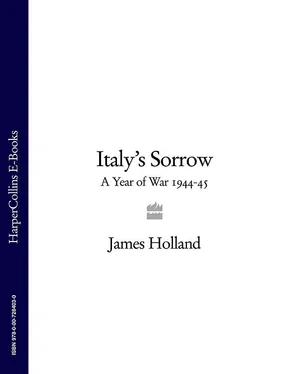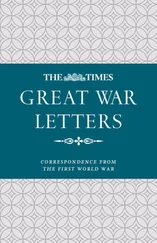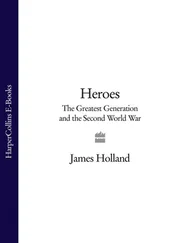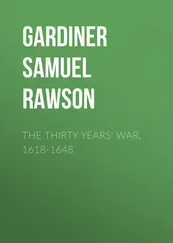The Eve of Battle May 1944 CONTENTS List of Maps Note on the Text Principal Personalities Prologue Part I: The Road To Rome 1 The Eve of Battle: May 1944 2 Battle Begins: 11–12 May 1944 3 Churchill’s Opportunism 4 The Slow Retreat 5 Frustrations 6 Between the Devil and the Deep Blue Sea 7 Masters of the Skies 8 The Battle Rages: 13–16 May 1944 9 New Order 10 Breaking the Gustav Line: 17–18 May 1944 11 Achtung Banditen! 12 The Fog of War: 18–23 May 1944 13 Break-out: 23–26 May 1944 14 General Clark and the Big Switch: 26–30 May 1944 15 The Fall of Rome: 1–5 June 1944 Part II: The Brutal Summer 16 The North 17 The Problems of Generalship: June 1944 18 The Typhoon Rolls North 19 Breaking the Albert Line: 20–30 June 1944 20 The Politics of War 21 Differences of Opinion 22 Summer Heat: July 1944 23 Crossing the Arno: July–August 1944 24 A Change of Plan: August 1944 25 Despair: August 1944 26 The Gothic Line: 25 August–1 September 1944 27 The Tragedy of Gemmano: 1–12 September 1944 28 Mountain Passes and Bloody Ridges: 12–21 September 1944 Part III: The Winter of Discontent 29 Death in the Mountains: 22–29 September 1944 30 The Reason Why 31 Rain, Mud and Misery, Part I: 1–14 October 1944 32 Rain, Mud and Misery, Part II: 15–31 October 1944 33 The Infantryman’s Lot: November 1944 34 The Partisan Crisis: November–December 1944 35 White Christmas: December 1944 Part IV: Endgame 36 Stalemate: January–February 1945 37 Getting Ready: February–April 1945 38 The Last Offensive: 9–20 April 1945 39 The End of the War in Italy: 21 April–2 May 1945 Postscript References Bibliography Acknowledgements Abbreviations and Glossary Guide to ranks Index ITALY’S SORROW A Year of War, 1944–1945 JAMES HOLLAND Copyright ITALY’S SORROW A Year of War, 1944–1945 JAMES HOLLAND About The Publisher
There were many nationalities and differing races in the two Allied armies waiting to go into battle. The British and Americans formed the largest contingents, but there were also French, Moroccans, Algerians, Canadians, New Zealanders (whites and Maori), Poles, Nepalese, Indians (all faiths), South Africans (white, Asian, black, Zulus), and in the air forces, Australians, Rhodesians and others beside. Whatever their differing creeds and wide-ranging backgrounds, they all were relieved to see that on this day, the eve of battle, the weather was being kind. Thursday, 11 May 1944, was a glorious day: warm, with blue skies, and, by the afternoon, not a rain cloud in sight, just as it had been for most of the month. By evening, the temperature had dropped somewhat, but it was still warm, with just the faintest trace of a breeze – even near the summit of Monte Cassino, some 1,700 feet above the valley below. In their foxholes, the men of the 45,600-strong II Polish Corps waited, repeatedly checking their weapons; eating a final meal; exchanging anxious glances. The minutes ticked by inexorably slowly. It was quiet up there, too; quieter than it had been for many days. Not a single gun fired. The mountain, it seemed, had been stilled.
It was now three weeks since the Poles had taken over the Monte Cassino sector and since then, almost every minute, both day and night, had been spent preparing for and thinking about the battle ahead. By day, the men had trained; they had held exercises in attacking strongly fortified positions, practising rock climbing and assaulting concrete bunkers. New flamethrowers were also introduced, while each squadron and platoon * * Although they were now operating as infantry, the Polish cavalry and armoured units kept their usual structure and formation. * Allied Central Mediterranean Forces had become Allied Forces in Italy on 9 March 1944. * The 85th was given the association ‘Custer’ because the division was activiated in 1917 at Camp Custer in Michigan, so named after the Civil War and Indian Wars general who had led the Michigan Cavalry Brigade at the Battle of Gettysburg. * There were 158,805 men in AOK 10 and AOK 14, while Alexander could call on 602,618 Allied troops in Italy at this time, of whom 253,859 were British, 231,306 were American, 71,827 were French and 45,626 were Polish. Although nothing like this number would take part in the coming battles, Alexander was still able to have the three to one advantage in manpower along the main battle line that he believed was necessary for victory. Even so, when one considers the air forces and men in reserve, the best part of a million men were to be directly and indirectly involved in the offensive. * Leese was never particularly accurate with his facts and figures when writing to his wife. In fact, there were around 1,660 guns in action: 1,060 along Eighth Army’s front, and 600 along that of Fifth Army.
was given clear and detailed instructions as to what they were supposed to do when the battle began.
By night, the Poles had been even busier. Vast amounts of ammunition and supplies had to be taken up the mountainside, a task that was impossible during daylight when the enemy would easily be able to spot them – secrecy was paramount; so, too, was saving lives for the battle ahead. It was also a task that could only be achieved by the use of pack mules and by the fortitude of the men, for there were just two paths open to them – both old mountain tracks, which for more than six miles could be watched by the enemy. A carefully adhered-to system had been quickly established. Supplies were brought from the rear areas by truck. Under carefully laid smoke screens, they were loaded onto smaller, lighter vehicles, then, as the mountain began to rise, they were transferred onto mules and finally carried by hand and on backs by the men themselves, slogging their way up the two mountain tracks that led to the forward positions. All this was done in the dark, without any lights, and as quietly as possible. Even so, the men were often fired upon. The German gunners around Monte Cassino would lay periodic barrages along various stretches of these mountain paths and despite their best efforts, casualties mounted – casualties II Polish Corps could ill-afford.
Now the waiting was almost over, and as the sun slipped behind the mountains on the far side of the Liri Valley, and darkness descended, the Poles knew that at long last the moment for which they had endured so much in the past four-and-a-half years was almost upon them.
In what had once been a lovely mountain meadow, the men of the 2nd Squadron, 12th Lancers, were now dug in. Part of the Polish Corps’ 3rd Carpathian Division, they were some 600 yards from the crumbled ruins of the monastery, and the ground ahead of them was pockmarked and churned by shell holes, and strewn with twisted bits of metal and remnants of the dead. Not that twenty-seven-year-old Wladek Rubnikowicz had had much chance to examine the area that was to be his part of the battlefield. In an effort to keep their presence a secret, Wladek and his comrades had been forbidden to send out patrols to reconnoitre the area. In fact, since arriving in their positions on the night of 3 May, Wladek had done little but bring up more supplies by night and brace himself for the attack by day.
The Lancers were cavalry, trained to use armoured cars and to operate as a fast-moving reconnaissance unit, but for the battle they had become infantrymen, foot-sloggers like almost every other soldier that had fought across this damnable piece of land for the past four months. The armoured cars now waited for them miles behind the line with the rear echelons. Only once the battle was won, and the men were out of the mountains and into the valleys below, would they get their vehicles back.
For the vast majority of Polish troops now lying in wait on the mountain, their journey there had been long and tortuous – an epic trek that had seen them travel thousands of miles, crossing continents and enduring terrible losses and hardship – and Wladek was no exception. It was a miracle that he was alive at all.
Читать дальше











